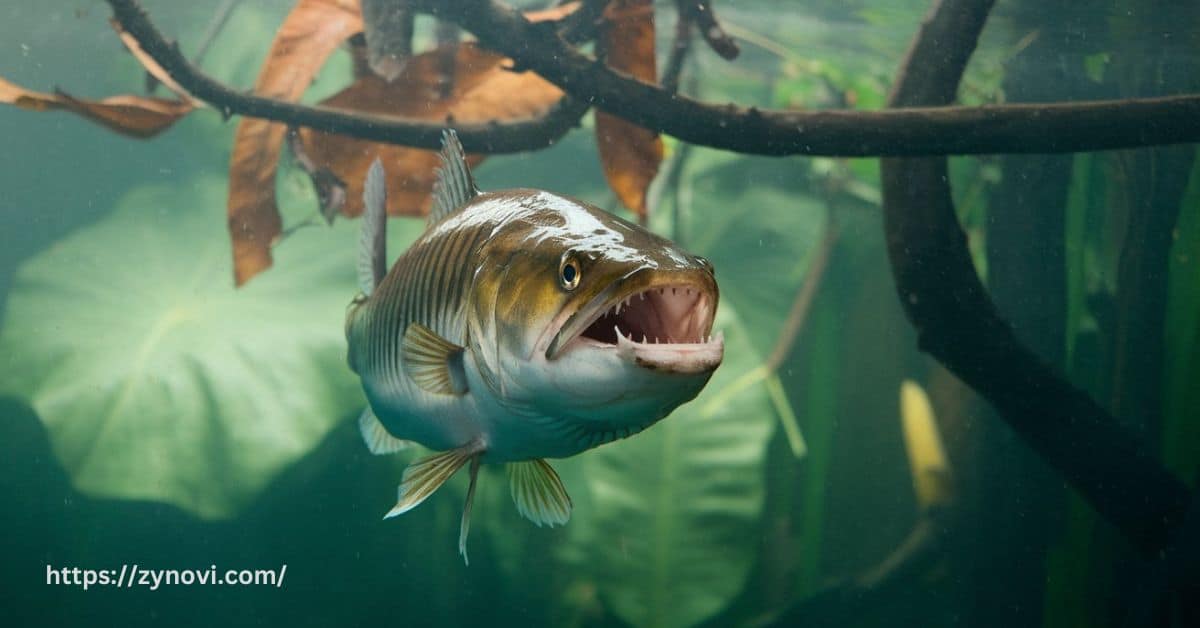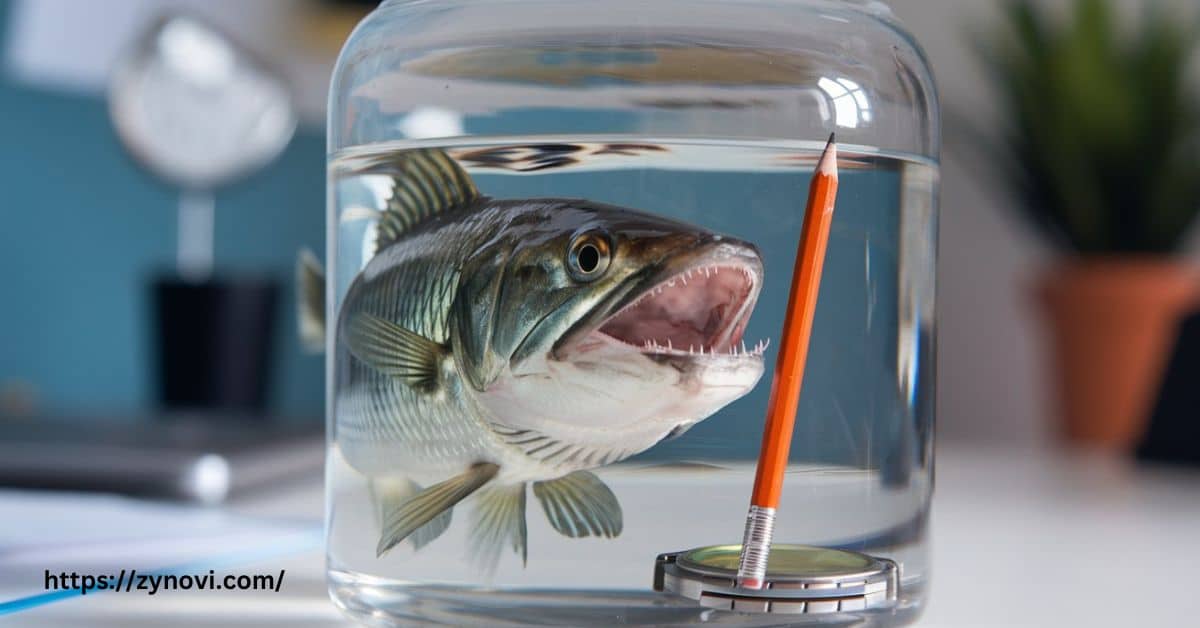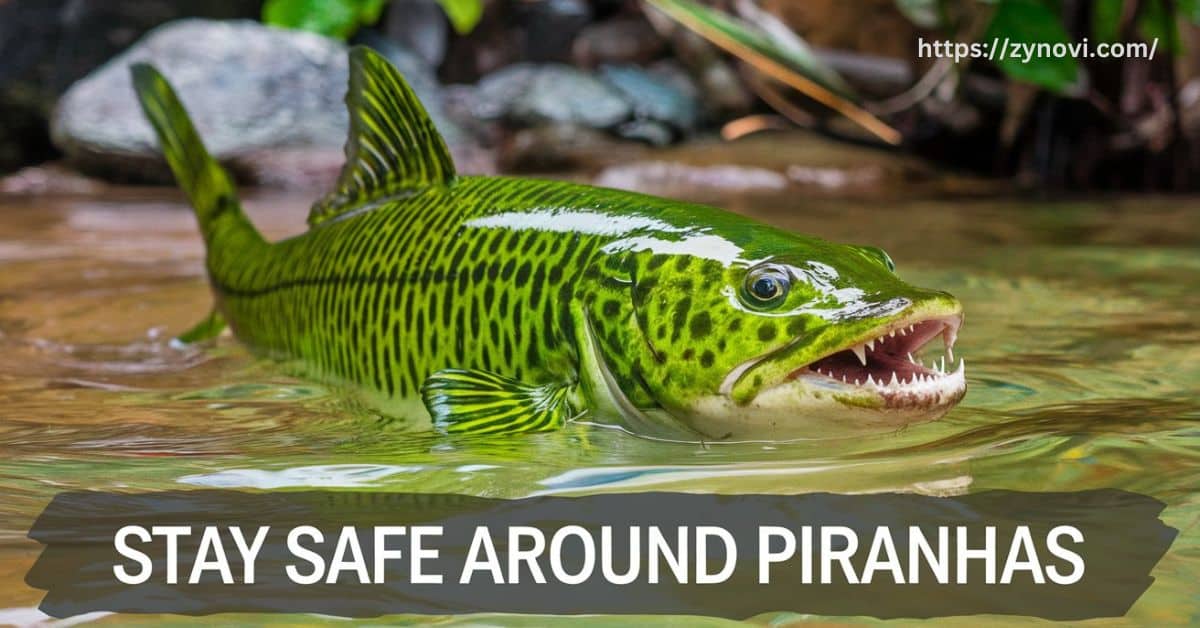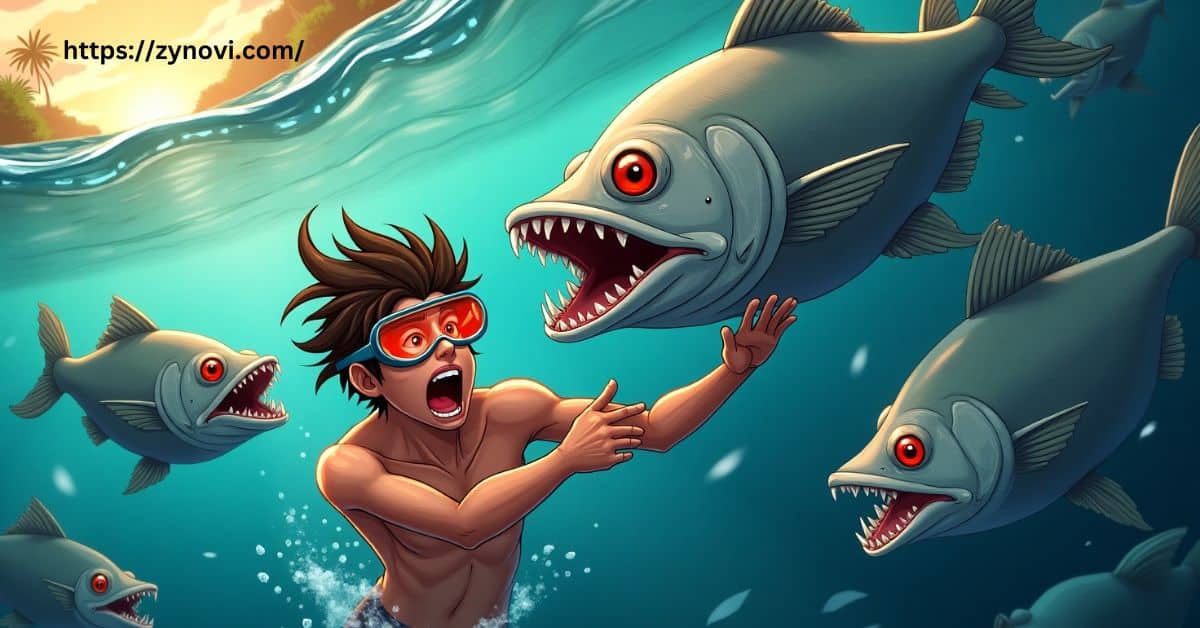Do Piranhas Attack Humans? Piranhas do not attack humans unless provoked under extreme conditions, like food scarcity or low water levels.
This question has sparked fear and fascination for years, making piranhas infamous for their razor-sharp teeth and vicious reputation. But how much of this fear is justified? Are piranhas really as deadly as they’re made out to be, or is there more to the story?
In this article, we’ll jump into the truth behind piranha attacks, exploring what triggers their aggression and how you can safely share waterways with these fascinating creatures. If you’ve ever wondered whether piranhas are truly a threat, you’re about to find out! Keep reading you might be surprised.
Who Are Piranhas?
Piranhas, belonging to the Characidae family, are often portrayed as relentless predators capable of stripping flesh from bone in seconds. However, understanding their actual behavior and ecological role can help dispel many misconceptions.
Description and Classification
Piranhas are freshwater fish native to South America, especially the Amazon Basin, Orinoco River, and various other rivers across Brazil, Bolivia, and Argentina. These fish are part of the subfamily Serrasalminae, which also includes pacus and silver dollars.
There are several species of piranhas, but the red-bellied piranha (Pygocentrus nattereri) stands out as the most notorious due to its aggressive feeding behavior and distinctive appearance.
This species is often the primary subject of research and media portrayal when it comes to piranha-related myths and facts.
Physical Characteristics
| Feature | Description |
|---|---|
| Sharp Teeth | Piranhas have interlocking, razor-sharp teeth that are highly efficient for tearing flesh. |
| Robust Bodies | Their bodies are sturdy and well-adapted to swift movements in water. |
| Red-bellied Piranha | This species has a distinctive reddish belly, adding to its recognizable look. |
| Size | They can grow up to 12-14 inches in length, making them medium-sized fish. |
Habitat and Distribution
Habitat: Piranhas are predominantly found in the Amazon Basin, Tocantins River, and Piraí River, where they thrive in warm, slow-moving waters rich in vegetation. Their habitat adaptability enables them to inhabit a range of aquatic environments, from murky riverbeds to clear streams.
Distribution: Seasonal changes, such as droughts and fluctuations in water levels, play a significant role in influencing their distribution and behavior, as they tend to migrate or alter their activity patterns in response to environmental conditions.
Decoding Piranha Behavior

Diet and Feeding Habits
Piranhas are omnivorous and opportunistic feeders, consuming a diverse diet that includes fish, insects, plants, and carrion. They are known for their ability to adapt to the available food sources in their environment.
While they can occasionally enter a feeding frenzy, particularly under conditions such as low food availability or environmental stress, such events are relatively rare in the wild.
These frenzies, often triggered by specific stimuli, contribute to the piranhas’ fearsome reputation, but they generally prefer easier, less risky food sources when available.
Social Structure and Schooling
Piranhas exhibit schooling behavior, often moving in groups that provide protection from predators and enhance their hunting efficiency. This hierarchical structure in schools helps maintain order and reduces individual vulnerability.
The presence of a well-defined hierarchy ensures that each member of the school has a role, from guarding the periphery to taking central positions, which further strengthens their collective defense mechanisms against potential threats.
Aggressive vs. Defensive Behavior
Piranhas’ territorial aggression is typically a defensive response to perceived threats rather than unprovoked attacks. Key triggers for their feeding response include:
- The smell of blood: Even small amounts can activate their predatory instincts.
- Sudden movements: These can be interpreted as signs of prey or danger, prompting a reaction.
- Environmental stressors: Factors like low food availability or habitat disturbance can heighten aggression.
- Territorial defense: Protecting their space from intruders is a common cause of aggressive behavior.
Historical and Modern Accounts of Piranha Attacks
Are Piranhas Dangerous? Documented Incidents
Historical reports of piranha attacks have contributed significantly to their fearsome image. Theodore Roosevelt’s 1913 expedition in the Amazon notably sensationalized these fish, describing them as capable of devouring large animals swiftly.
However, many of these accounts were exaggerated to captivate audiences. Documented cases of attacks on humans are generally rare and typically occur under conditions such as habitat disturbance or food scarcity.
For instance, during severe droughts, piranhas might become more aggressive as they struggle for survival, leading to increased human encounters. These incidents are more about environmental stressors than the inherent aggression of the species.
Recent Attacks
Recent piranha attacks on humans have been linked to environmental changes and human activities. Notable incidents include: (Danger Piranha Fish)
- 2011 (Brazil, Palmas): A series of attacks occurred in the Brazilian city of Palmas, where dozens of swimmers were bitten by piranhas in the Tocantins River. Wikipedia
- 2013 (Argentina, Rosario): Over 70 bathers were injured by piranhas at a beach near Rosario, Argentina, with injuries primarily to hands and feet. CNN
- 2015 (Brazil, Paranaíba): More than 60 people were injured by piranhas in the waters near the Brazilian town of Paranaíba. Wikipedia
- 2022 (Paraguay, San Pedro): A man who drowned in the Paraguay River was attacked by piranhas. Wikipedia
These incidents often coincide with environmental changes, such as low water levels and increased human activity. For example, the Tocantins River saw increased attacks during periods of low water levels and heightened human activity.
Exaggerations and Myths
The idea of piranhas as ruthless, indiscriminate killers is largely a myth. Scientific studies, including those by the Smithsonian Tropical Research Institute and the University of St. Andrews, reveal that fatal encounters are rare.
These studies stress that most piranha attacks occur under specific circumstances, such as environmental stress or provocation. Understanding the context of these incidents is crucial, as piranhas typically do not seek out human targets unless threatened or agitated.
Insights from Scientific Research

Research on Piranha Aggression
Research on piranha aggression suggests that their hostile behavior is primarily driven by environmental stressors like droughts, habitat loss from deforestation, and pollution.
Studies reveal that piranhas often become more aggressive in these conditions as a survival mechanism, rather than for predation.
Their aggressive actions are typically linked to defending their territory or food sources rather than seeking out human or animal prey. These findings highlight that piranha behavior is largely influenced by external environmental pressures.
Factors Influencing Attacks
Several factors influence the likelihood of piranha attacks:
- Food Scarcity: When food sources are limited, piranhas may become more aggressive in search of sustenance.
- Habitat Disturbance: Changes to their environment, such as deforestation or pollution, can lead to heightened stress and aggression in piranhas.
- Human Encroachment: Increased human presence in piranha habitats, such as swimming or fishing in their territories, can provoke defensive behavior.
Understanding these triggers is key to reducing the risk of attacks and promoting safer interactions between humans and piranhas.
How to Stay Safe Around Piranhas

Precautions for Swimmers
To reduce the risk of piranha attacks, swimmers should follow these safety measures:
- Avoid swimming with open wounds: Piranhas are more likely to attack if they sense blood in the water, so it’s essential to avoid swimming with cuts, scrapes, or any open wounds.
- Monitor water levels and avoid areas during low water periods: Piranhas are more aggressive when water levels are low, as they are confined to smaller areas and more territorial. Avoid swimming during these times to reduce risk.
- Use waterproof bandages to cover any cuts or abrasions: If you have small wounds, waterproof bandages can help prevent blood from attracting piranhas and keep you safe in the water.
- Wear protective clothing to minimize exposure: Wearing thick wetsuits or protective footwear can reduce the chances of piranhas biting, especially if they come in contact with your skin or feet.
Local Practices and Guidelines
Local authorities in regions like Palmas and Bolivia have implemented guidelines to ensure safe interactions with piranhas. They recommend using nets or barriers in high-risk areas to prevent swimmers from encountering the fish.
Additionally, local communities, particularly along the Tocantins River, have developed strategies to coexist with piranhas. These practices include avoiding certain swimming spots during peak feeding times, educating locals on piranha behavior, and promoting awareness of water safety measures to reduce the risk of attacks.
FAQs
Do piranhas eat people?
While piranhas are capable of biting humans, instances of them eating humans are extremely rare and usually involve extreme circumstances such as drowning victims.
What should you do if attacked by piranhas?
If attacked, try to remain calm and slowly back away from the area. Swift, erratic movements can exacerbate the situation. Seek immediate medical attention for any wounds.
Are all piranha species dangerous?
Not all species are dangerous to humans. The red-bellied piranha is among the more aggressive species, but many others pose minimal risk.
How can you identify a piranha-infested waterbody?
Signs include schools of fish near the surface, disturbances in the water, and local knowledge about the presence of piranhas.
Is it safe to swim in waters known to have piranhas?
Swimming in piranha-infested waters can be safe if precautions are taken, such as avoiding low water periods and areas with known feeding frenzies.
Conclusion: Do Piranhas Attack Humans?
Do Piranhas Attack Humans? While piranha attacks on humans have often been sensationalized, understanding their behavior and the environmental factors that trigger aggression offers a clearer perspective.
Piranhas are not the indiscriminate killers they are often made out to be; their aggression is typically a response to stress, food scarcity, or territorial defense. By respecting their natural habitat, taking necessary precautions, and being mindful of the conditions that may provoke aggression, humans can coexist with piranhas in waterways safely.
Proper awareness and responsible behavior are key to peaceful interactions with these fascinating creatures.










